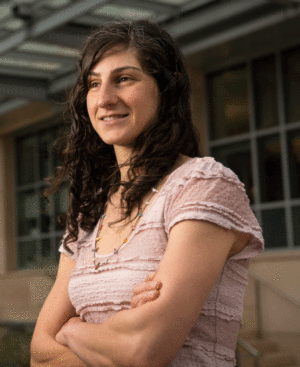ACS Applied Materials & Interfaces, in partnership with the ACS Division of Colloid & Surface Chemistry, is pleased to announce that Dr. Jessica Schiffman, University of Massachusetts Amherst, is the winner of the 2019 ACS Applied Materials & Interfaces Young Investigator Award. Dr. Schiffman will present a lecture at the 2019 ACS Fall National Meeting […]

ACS Applied Materials & Interfaces, in partnership with the ACS Division of Colloid & Surface Chemistry, is pleased to announce that Dr. Jessica Schiffman, University of Massachusetts Amherst, is the winner of the 2019 ACS Applied Materials & Interfaces Young Investigator Award. Dr. Schiffman will present a lecture at the 2019 ACS Fall National Meeting in San Diego.
Read a Short Interview with Dr. Jessica Schiffman about Her Life and Work:

Growing up, my favorite subjects were always math and science. Not really knowing what I wanted to major in, I attended Rutgers University, a large state institution, and declared myself a math major (although I also considered chemistry and fine arts).
During course registration, I was browsing the huge paperback course catalog and saw “independent study in mathematics” listed, which sounded perfect, but it also required “permission by instructor.” Perhaps for the first time, I was forced into finding and talking to faculty members about their research. I fondly remember those conversations as being interesting but not aligned with my passions…so I again sat down with the course catalog. Page-by-page I tore out majors that were not of interest to me until I was left with only the engineering majors.
After reading the engineering majors and course descriptions, I realized that materials science and engineering combined my favorite courses – chemistry, physics, and math– while also promoting creativity to enable next-generation materials with improved properties, i.e., greener, lighter, and stronger. So, it was not until the very end of my sophomore year at Rutgers University that I learned that there actually was a discipline called materials science and that’s the day that I transferred from the school of arts and sciences into the school of engineering.
The highlight of my day-to-day life is walking into my research lab and seeing a happy team of intelligent scientists and engineers learning and problem-solving together.
I lead an interdisciplinary and imaginative research team that uses “green” materials science and engineering to address the grand challenges that humanity faces in human health. By engineering “slippery” polymer materials to resist microbial contamination, we can decrease the occurrence of hospital-acquired infections and improve people’s access to clean water. These are just two of the scientific queries that my team seeks to solve by interfacing materials science with microbiology.
I would remind early career scientists to think globally because there is a big world that exists outside of your research lab. Years into a new position, you may remember some of the arguments you had with former collogues about thermodynamics or fume-hood space, but it will be sprinkled with a fondness because you survived your qualifying exams and other big deadlines together. Surround yourself with positive, ambitious, and critical people; commit to championing for each other and remember to invest in their success too.
It is truly an honor to receive the ACS Applied Materials & Interfaces Young Investigator Award! I would like to thank all of my current and former students, collaborators, mentors, and advisors.
***
Read some of Dr. Jessica Schiffman’s ACS Applied Materials & Interfaces articles:
Mechanical Properties and Concentrations of Poly(ethylene glycol) in Hydrogels and Brushes Direct the Surface Transport of Staphylococcus aureus
DOI: 10.1021/acsami.8b18302
Antimicrobial Activity of Silver Ions Released from Zeolites Immobilized on Cellulose Nanofiber Mats
DOI: 10.1021/acsami.5b10130
Bacterial Adhesion Is Affected by the Thickness and Stiffness of Poly(ethylene glycol) Hydrogels
DOI: 10.1021/acsami.7b12145
Bioinspired Photocatalytic Shark-Skin Surfaces with Antibacterial and Antifouling Activity via Nanoimprint Lithography
DOI: 10.1021/acsami.8b05066